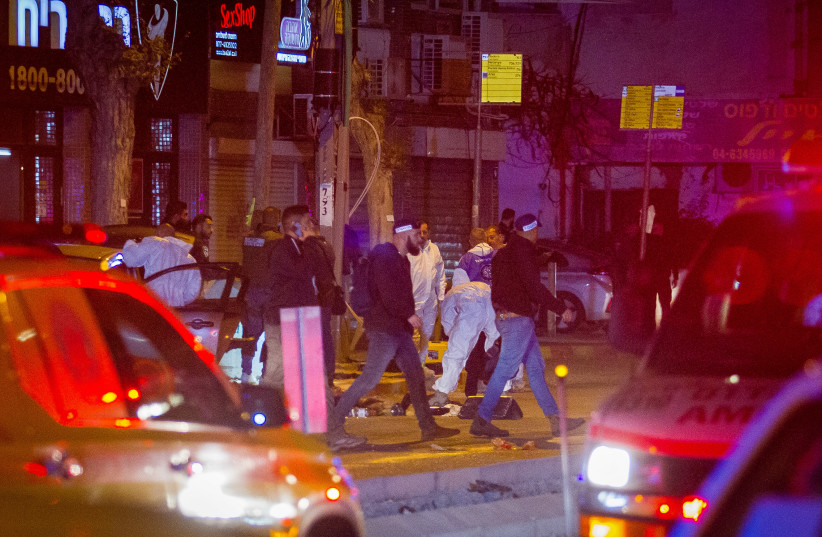by Seth J. Frantzman
Terror attacks inside Israel’s Green Line have been rare, now there have been two in a week by ISIS affiliates or supporters.
A MEMBER of ISIS waves the group’s flag in Raqqa
(photo credit: REUTERS)
|
Statements have been made that ISIS has claimed responsibility for the terrorist attack in Hadera. However, claims like this require more confirmation because ISIS or ISIS-affiliated networks often claim responsibility for attacks that they had no role in, or that they merely inspired.
Nevertheless, the important issue here is that the attack in Hadera and the one last week in Beersheba appear linked to local radicalization of Arab citizens within Israel.
This is not an entirely new phenomenon. There have been a handful of Arabs from Israel who journeyed to join ISIS after 2014. Some were arrested between 2015 and 2017. The lack of ISIS recruits from Israel was often a source of discussion over the years, because while hundreds or thousands joined ISIS from neighboring states, the number of ISIS recruits from inside Israel’s Green Line, or even from the West Bank and Gaza, was relatively small.
In Jerusalem, for instance, the presence of other Islamic-oriented groups, such as Hizb ut-Tahrir, likely gave locals a ready-made place to exercise their faith rather than seek inspiration from groups like ISIS. There also exists an Islamic tradition in Israel in groups like the northern and southern branches of the Islamic movement. Israel outlawed the northern branch of the Islamic Movement in 2015.
By 2017, some 60 Israeli citizens had been identified who went to Syria, some of whom joined ISIS. Nineteen of them even had their citizenship revoked. Some of those who went abroad even later asked to come back to Israel.
 Israeli security forces inspect the scene of a shooting attack in Hadera, March 27, 2022. (credit: FLASH90)
Israeli security forces inspect the scene of a shooting attack in Hadera, March 27, 2022. (credit: FLASH90)They came from areas across Israel, including towns near the center and Triangle, as well as the North, near and around Nazareth. In 2015, Israel also detained pro-ISIS members in the West Bank who apparently came from Hebron. The Meir Amit Intelligence and Information Center included documentation on these ISIS-inspired planned attacks over the years and the information is scant.
So what happened? Is ISIS targeting Israel today and will extremist groups and those inspired by ISIS now decide to increasingly target Israel? What would set them off?
There are many questions that for now likely have no real answers. The lack of terrorist attacks in general inside Israel’s Green Line over the last few years has been noticeable. In addition, concerns over radicalization among Arab citizens of Israel, an issue going back decades, continues to be something to keep an eye on. This is because, in general, a string of attacks like this has been rare. Now there have been two in a week.
ISIS
AND other types of extremist attacks generally come in waves, sometimes
involving copycats. This was the case in Europe with the string of
attacks carried out by ISIS in France and Belgium in 2015 and 2016.
Sometimes these attacks are solitary and large scale, such as in Sri Lanka on Easter 2019, or the West Gate attack in 2013 in Kenya. Similarly,\ the London bus bombings and Madrid train attacks in 2005 and 2004, respectively, were of this kind. The series of ramming attacks in Europe, such as in Germany and France, were of the type that appeared to be carried out by radicalized lone killers. Similarly, a number of terrorist attacks in the US, such as the San Bernadino attack and Orlando nightclub shooting in 2015 and 2016 appear to be part of a wave of such terrorism. Israel could be targeted by such a wave that might include the two recent attacks or more.
Historically, ISIS has not appeared to target Israel. ISIS in general is greatly weakened across the region. While there are still ISIS members in places like Syria, their focus has generally been on releasing their extremist members from detention in eastern Syria.
It’s also entirely plausible that extremist groups around the world will move on from ISIS and create a new type of group. There are many groups that have been affiliated with Al-Qaeda or ISIS across the Sahel in Africa and across the Middle East and Asia. Many of these may be awaiting a new type of extremism.
On the other hand, the weakening of the states of the region where these attacks took place in the last decades, and the deaths of extremists who were popular in the 1980s and 1990s and helped radicalized generations, is changing the nature of jihadist extremism. That is because previous generations have come and gone and powerful states, such as Turkey and Iran, have returned to the region.
The sources of radicalization and funding are also changing. Sources are drying up in the Middle East and moving to the periphery. It’s not clear if fighting Israel is even a rallying cause anymore.
All this would increase skepticism about the recent two attacks being part of an emerging trend. The question is whether groups will try to exploit this or if the response will lead to other reactions and copycats.
Seth J. Frantzman
Source: https://www.jpost.com/middle-east/isis-threat/article-702512
No comments:
Post a Comment